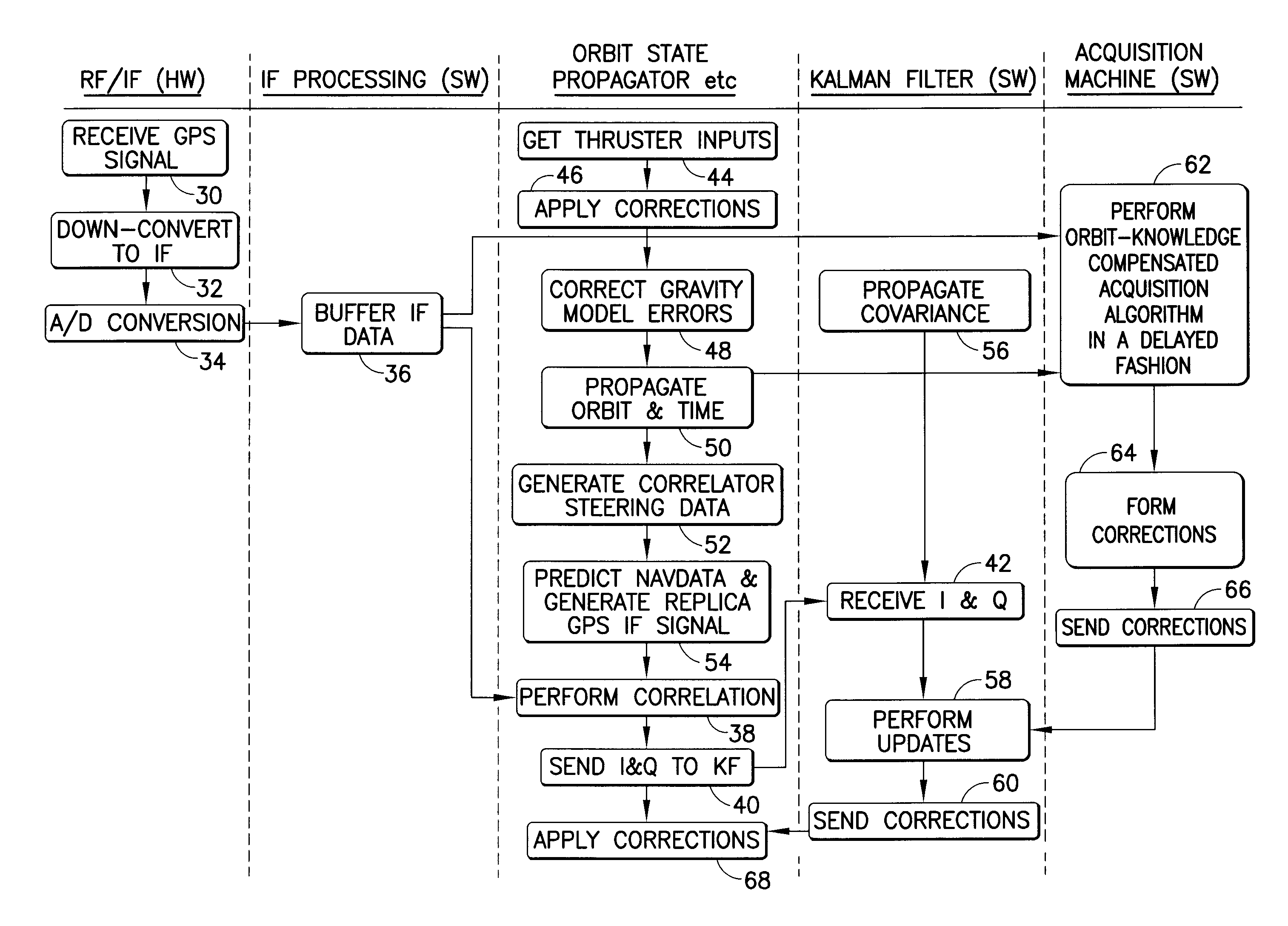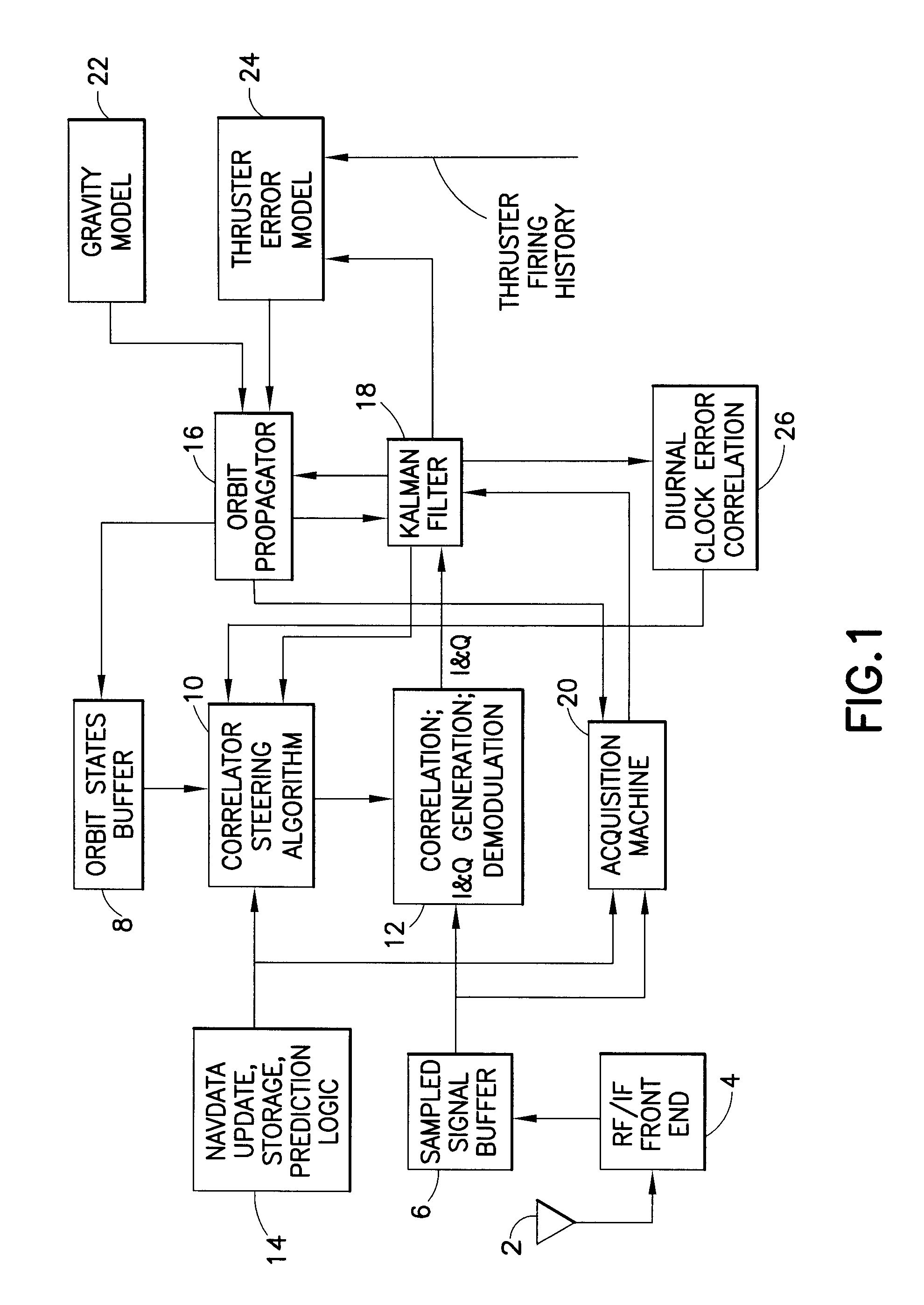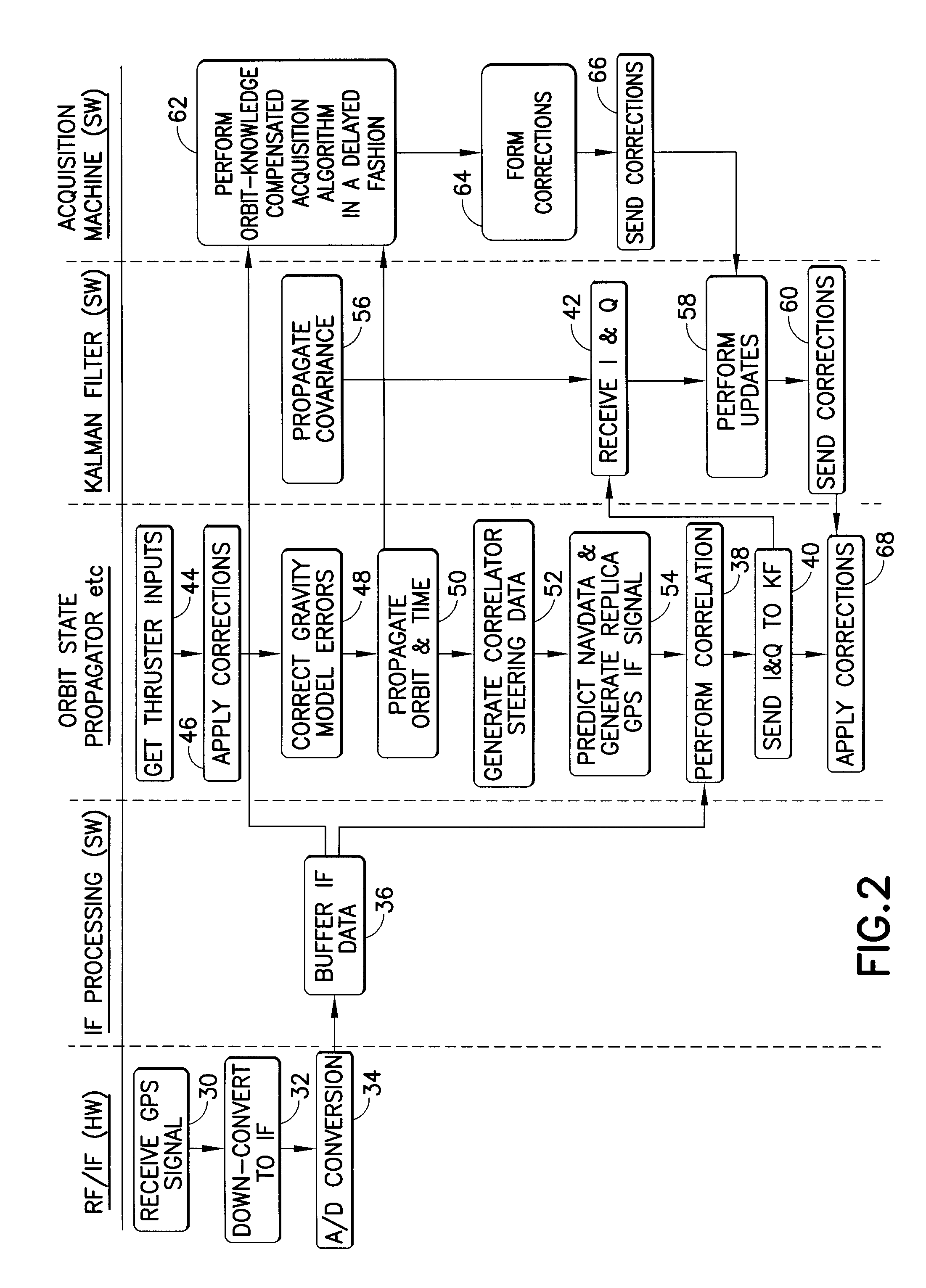Software GNSS Receiver for High-Altitude Spacecraft Applications
a receiver and spacecraft technology, applied in satellite radio beaconing, measurement devices, instruments, etc., can solve the problems of incompatibility of -oriented gps receivers with next-generation communications technology, difficult process of signal acquisition, and inability to integrate coherently with other technologies, and achieve long-term integration. the effect of long-term integration
- Summary
- Abstract
- Description
- Claims
- Application Information
AI Technical Summary
Benefits of technology
Problems solved by technology
Method used
Image
Examples
Embodiment Construction
[0020]A high-altitude GPS orbit determination system in accordance with one embodiment of the invention is depicted in FIG. 1. Analog GPS signals are received by an antenna 2 onboard the orbiting spacecraft. These GPS signals are received by front-end hardware represented by block 4 in FIG. 1. This front-end hardware preferably comprises a single-chip, easily space-qualifiable solution which can be purchased in the open market. Block 4 takes the L-band GPS signal and down converts to the Intermediate Frequency (IF) band (typically a few megahertz). Block 4 then samples the analog signal using an analog-to digital (A / D) conversion at around 4 MHz (for CA code). The output of block 4 is digital data that can be processed by a computer processor onboard the orbiting spacecraft. The design and fabrication of block 4 is well known in the art of GPS.
[0021]The sampled signal (i.e., digital) data from block 4 is output to a sampled signal buffer 6, which saves the digital data. Buffer 6 can...
PUM
 Login to View More
Login to View More Abstract
Description
Claims
Application Information
 Login to View More
Login to View More - R&D
- Intellectual Property
- Life Sciences
- Materials
- Tech Scout
- Unparalleled Data Quality
- Higher Quality Content
- 60% Fewer Hallucinations
Browse by: Latest US Patents, China's latest patents, Technical Efficacy Thesaurus, Application Domain, Technology Topic, Popular Technical Reports.
© 2025 PatSnap. All rights reserved.Legal|Privacy policy|Modern Slavery Act Transparency Statement|Sitemap|About US| Contact US: help@patsnap.com



